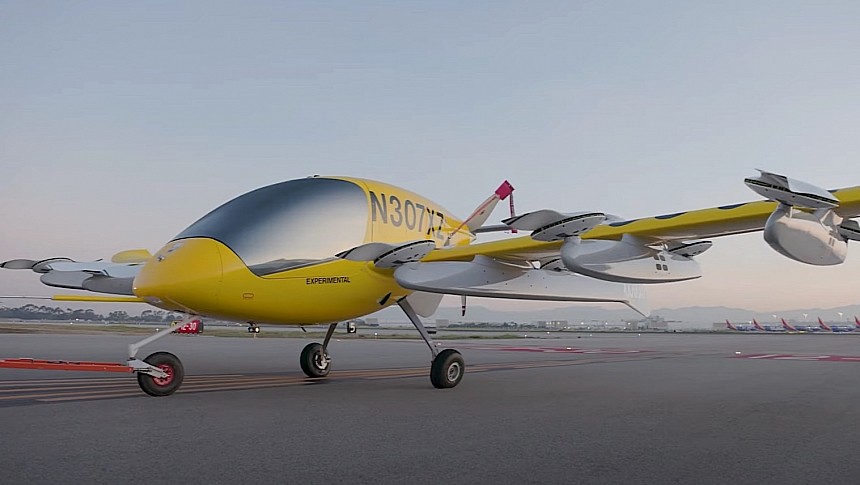Because it's a major player in the aerospace industry, there was no way for Boeing to miss out on the promises of what shapes up to be an exciting and very lucrative vertical take-off and landing (VTOL) industry.
Given how creating a side operation on its own that can handle VTOLs might have proven risky, Boeing struck a deal back in 2019 with Larry Page's Kitty Hawk, and so a company called Wisk was born. And Wisk just became the first VTOL operator to fly an autonomous air taxi in the greater Los Angeles area.
Wisk is working fast on becoming the first operator of autonomous eVTOLS to conduct commercial flights in the region. Its solution, something called Cora, is described as the “world's first self-flying, all-electric, four-seat air taxi.”
The thing is not here yet in its commercial form, and it'll probably be a while longer before we get to see it take off with customers for the first time, but the test conducted over LA brings us one step closer to that time.
To date, says Wisk, Cora platforms have flown over 1,700 test flights, the last and most impressive having taken place back in July at the EAA AirVenture in Oshkosh, Wisconsin. That was, as per the company, the “world’s first public demonstration of an autonomous eVTOL fixed-wing aircraft.”
The more recent LA flight took place at the Long Beach Airport during the local Festival of Flight, and this time it was a more real test, in the sense that the Cora had to fly right next to where regular passenger aircraft were conducting routine operations.
The test was a multi-transition one, meaning the aircraft had to switch from vertical to horizontal flight several times. The platform used for the procedure was a fifth-generation Cora, but the one that will take people up will be Gen 6.
The eVTOL will be powered by no less then 12 electric motor-driven propellers, six on each wing in sets of two. Only four people will fit inside (each with their own carry-on luggage), and they'll be taken to altitudes as high as 4,000 feet (1,219 meters).
The Wisk VTOL will be able to fly at speeds of up to 138 mph (222 kph) and the longest distance the thing can cover on a single charge of electricity is 90 miles (144 km). That makes it ideal for rather short, commuter flights between airports (it won’t be allowed to land just anywhere, of course). A charging time of just 15 minutes makes it ideal for use as an air taxi as well.
The LA flight of the Wisk machine may have gotten the company closer to its dream of starting operations, but we’re probably still a long way from that, as the logistics, infrastructure, and even regulations are not nearly complete.
Wisk is working fast on becoming the first operator of autonomous eVTOLS to conduct commercial flights in the region. Its solution, something called Cora, is described as the “world's first self-flying, all-electric, four-seat air taxi.”
The thing is not here yet in its commercial form, and it'll probably be a while longer before we get to see it take off with customers for the first time, but the test conducted over LA brings us one step closer to that time.
To date, says Wisk, Cora platforms have flown over 1,700 test flights, the last and most impressive having taken place back in July at the EAA AirVenture in Oshkosh, Wisconsin. That was, as per the company, the “world’s first public demonstration of an autonomous eVTOL fixed-wing aircraft.”
The more recent LA flight took place at the Long Beach Airport during the local Festival of Flight, and this time it was a more real test, in the sense that the Cora had to fly right next to where regular passenger aircraft were conducting routine operations.
The test was a multi-transition one, meaning the aircraft had to switch from vertical to horizontal flight several times. The platform used for the procedure was a fifth-generation Cora, but the one that will take people up will be Gen 6.
The eVTOL will be powered by no less then 12 electric motor-driven propellers, six on each wing in sets of two. Only four people will fit inside (each with their own carry-on luggage), and they'll be taken to altitudes as high as 4,000 feet (1,219 meters).
The Wisk VTOL will be able to fly at speeds of up to 138 mph (222 kph) and the longest distance the thing can cover on a single charge of electricity is 90 miles (144 km). That makes it ideal for rather short, commuter flights between airports (it won’t be allowed to land just anywhere, of course). A charging time of just 15 minutes makes it ideal for use as an air taxi as well.
The LA flight of the Wisk machine may have gotten the company closer to its dream of starting operations, but we’re probably still a long way from that, as the logistics, infrastructure, and even regulations are not nearly complete.







